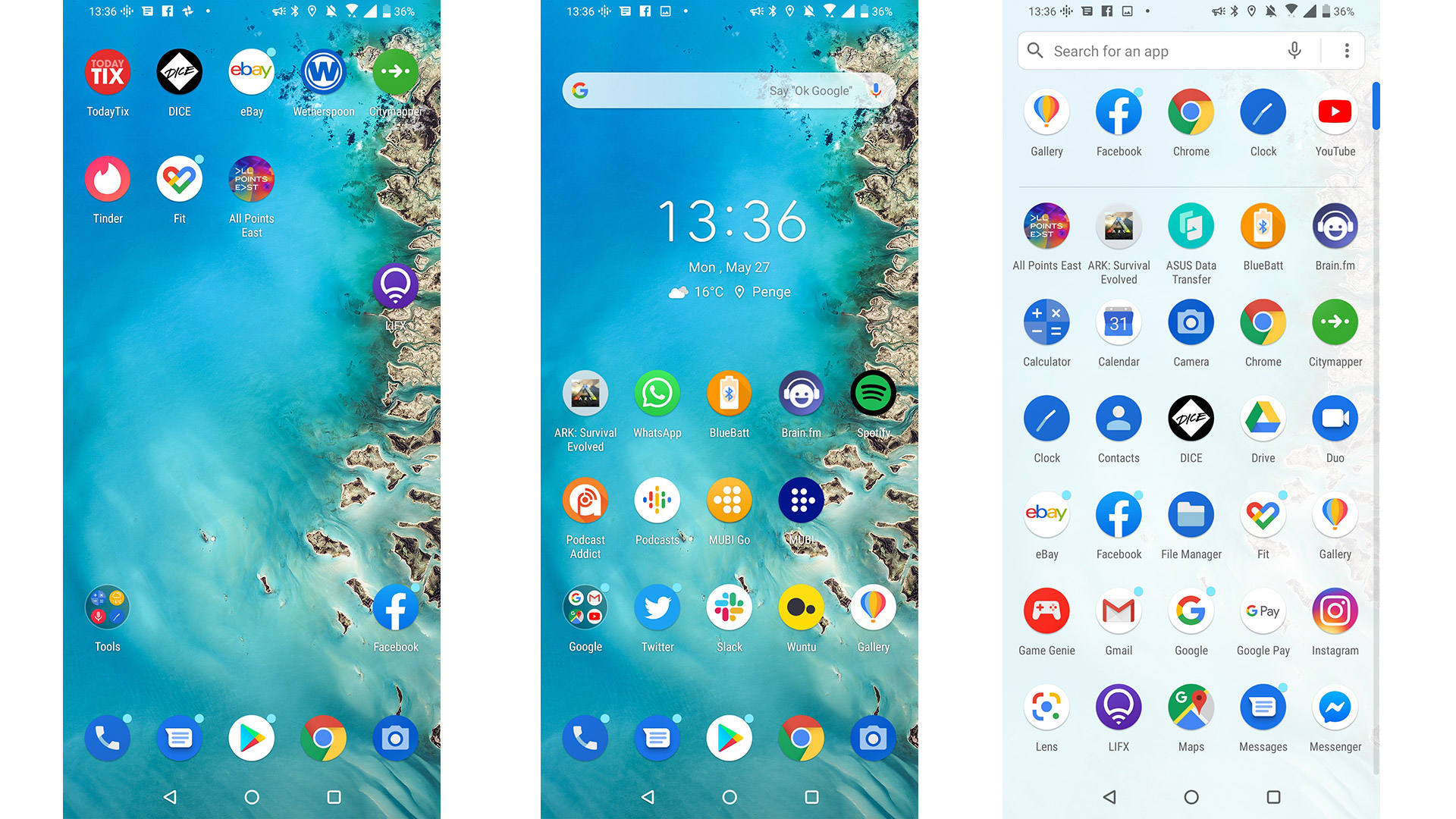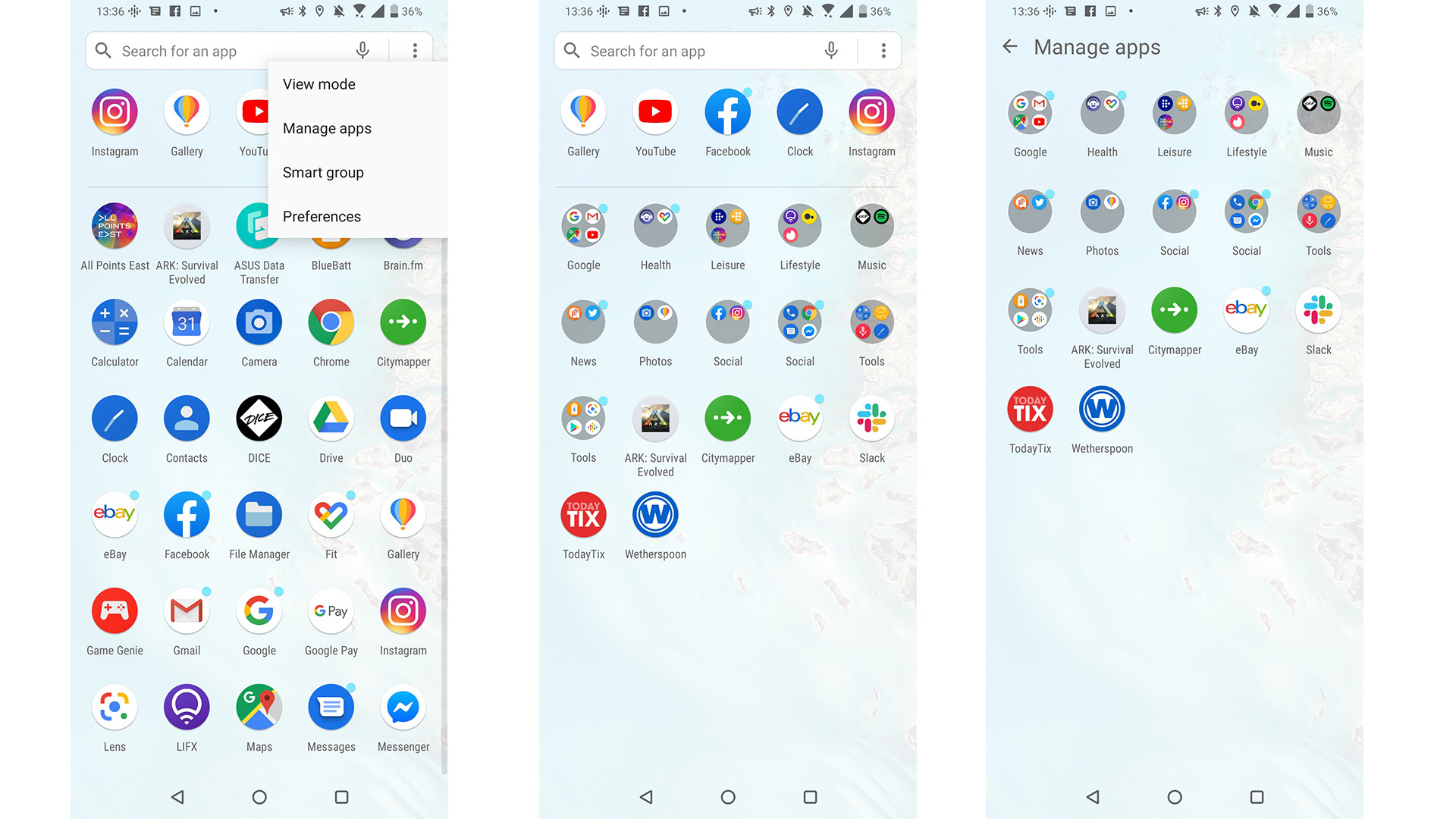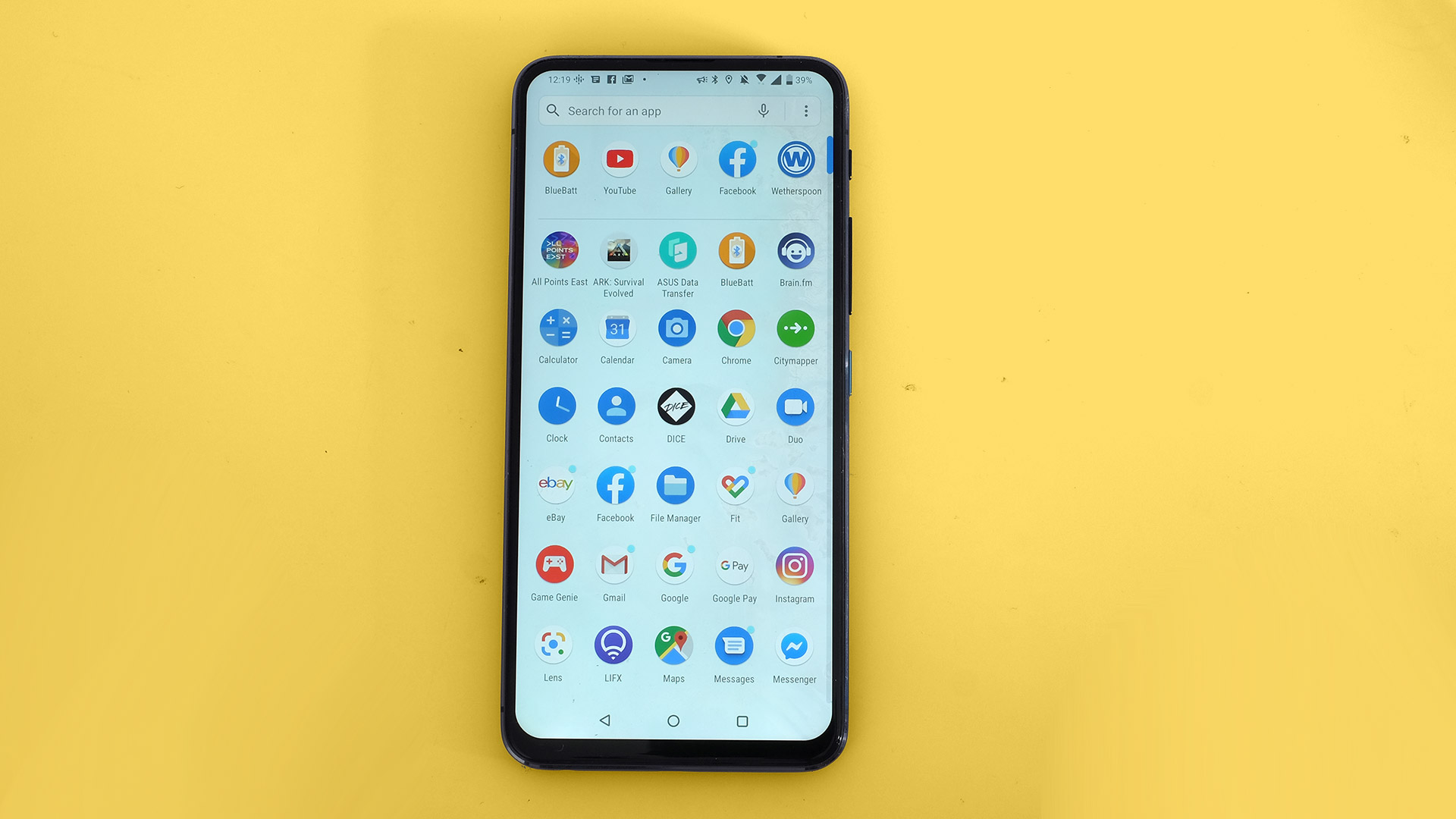Why you can trust TechRadar
Software
- Android 9
- ZenUI 6 interface
- Vanilla-like visual style
All Asus phones to date have used a pretty distinctive interface called ZenUI. It had its own wallpapers, icon style and app drawer design. ZenUI was generally packed with a lot of extra unwanted apps, and they were not as good as the ones Samsung adds to its phones.
The Asus ZenFone 6's style is completely different. Asus calls the phone’s new interface ZenUI 6, but it looks and feels more like ‘standard’ Android than the old versions of ZenUI.
Its apps menu is a vertical scroll with an off-white background. There are no additional home screens no one wants. Even the Settings menu looks just like that of vanilla Android Pie.

Have a dig around and you will find some Asus extras, but they don’t infringe on Android’s intended appearance. It is the sign of a good low-key interface.
You’ll find some of the additions in the app drawer. Press the little three-pip icon at the top right and you can turn on a mode called Smart Group. This shuffles your apps into theme-based folders, and radically alters the look and feel of the app drawer.
It turns out the ZenFone 6 does have some of those old ZenUI tricks, but you can ignore them more easily this time around.

The further you dig, the more you will find. For example, ZenUI 6 has a baked-in ‘dark’ mode, which is expected to come to Android in version Q.
Sign up for breaking news, reviews, opinion, top tech deals, and more.
Asus Game Genie is an app hidden solely in the settings menu until you restore its position in your app drawer. It claims to improve gaming performance, and lets you record your play, and stream it live over YouTube or Twitch. Or, for the non-exhibitionists, it can block incoming notification alerts and lock the brightness level.
Asus has also left a few of its old favorite apps on the ZenFone 6’s menus. There’s a file manager, sound recorder, alarms app and a data transfer tool.
You can tell Asus wants to try to improve and tweak Android. But the restraint it shows in the ZenFone 6 is classy. This phone feels closer to standard Android than, for example, the OnePlus 7 Pro.

Movies
- Notch and punch-hole-free screen a bonus
- A good amount of storage
- Loud, if not entirely refined, speakers
The Asus ZenFone 6 is an excellent phone for movies and TV episodes, for several reasons. First, the screen is very large and is not bitten into by a notch or punch-hole. The footage can fill the whole thing.
Display quality is very strong. It’s bright enough to do justice to a movie just about anywhere but a bright park or on a sunny beach. Contrast is solid for an LCD and color can be more-or-less as saturated as you like.
The Asus ZenFone 6 also has a headphone jack and a fairly loud speaker. This is not the prettiest-sounding speaker around. Its brash upper mids are bad on the ear when you crank up the volume but can cut through a lot of ambient noise. It passes the test of making a podcast audible in the shower easily.
Our review ZenFone is the lower-end 128GB version. But that is still an awful lot of space for downloaded video if you don’t stream all your content at this point.

Games
- As good as any Android out there for gaming
- Plenty of storage
All that space is even more important for games. And in a fundamental performance sense, you won’t find any better Android for them either.
The Asus ZenFone 6’s Snapdragon 855 chipset has an extremely powerful Adreno 640 graphics chip. It’s almost twice as powerful as the Tegra X1, a version of which is used in the Nintendo Switch.
It’s more powerful than the Huawei P30 Pro or the UK version of the Samsung Galaxy S10 Plus. Sounds pretty impressive in that context, right?
We should also note it’s only as powerful as the OnePlus 7. They have the same CPU.
As the Snapdragon 855 is at the very top end of Android chipsets, the only games that will struggle are badly-designed ones. Ark: Survival Evolved runs well with dynamic resolution maxed and the detail set to ‘epic’.
This is one of the few games that really separates good mid-range and true high-end chipsets.
The Asus ZenFone 6 is about as good a gaming phone as you’ll find at the price. And it’s better than the Asus ROG Phone, if only because it has the next generation Qualcomm CPU.
We have noticed one little oddity, though. After playing a very demanding game for a few minutes, the camera housing starts to heat up noticeably. This is likely simple physics in action. As the camera and the bit of the body it slots into are metal, they conduct heat better than the surrounding glass.
Much of the heat given off by the ZenFone 6’s CPU and GPU ends up pulled down to the camera, like children on a school trip drawn to the nearest McDonalds.

Performance
- Snapdragon 855
- Excellent power
How powerful is the Asus ZenFone 6’s Snapdragon 855 chipset? It is the best you’ll find in an Android phone at launch.
The Snapdragon 855 has one turbo-charged Kryo 485 core clocked at 2.84GHz, three at 2.41GHz, and four at 1.78GHz. You get the standard eight cores, but the distribution of power is a little different this time around.
This is matched with 6GB or 8GB of LPDDR4 RAM. Asus sent us the 6GB version, which will likely be the most popular among all but the hardcore crowd.
In Geekbench 4 our ZenFone 6 scores 10,779 (3,516 per core) points. As expected, this is roughly similar to the OnePlus 7 Pro, and a good 25% better than the Pixel 3 XL’s score. That phone has the last-generation Snapdragon 845.
The GPU (graphics) side gets a similarly chunky upgrade. You get the best Android processor available with a ZenFone 6.
Its internal storage is fast too. The 128GB version reads at 685MB/s, in-line with a good SATA 3.0 SSD. Not bad at all.
Current page: Anything else I should know?
Prev Page Battery life and camera Next Page Verdict and competition
Andrew is a freelance journalist and has been writing and editing for some of the UK's top tech and lifestyle publications including TrustedReviews, Stuff, T3, TechRadar, Lifehacker and others.
